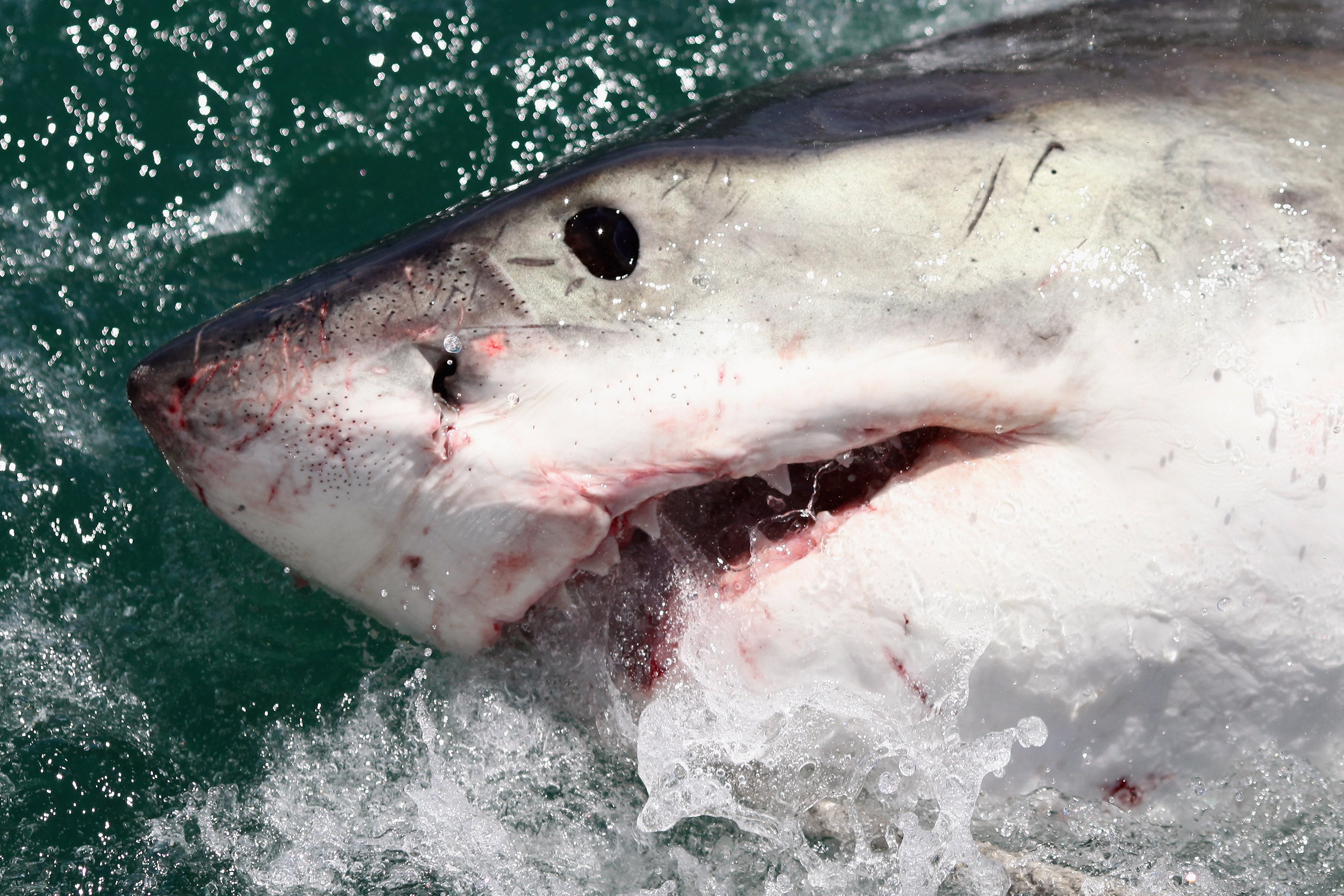Great white shark spends years ‘drawing a self-portrait’ with tracking tag
A great white named “Breton” was fitted with a satellite tracker
A shark has seemingly spent years drawing a picture … of itself.
The shark, a great white named “Breton”, was fitted with a satellite tracker to give researchers occasional updates on his location.
And, bizarrely, over the past couple of years the path of his movements up and down the US East Coast resembles a line drawing of a shark.
The shark’s “head” is a mass of tracking points along the coast of Florida and the Carolinas, with the “dorsal fin” coming up around Washington DC and New York. His “tail” is a long, curved path out into the Atlantic and back up to Nova Scotia.
Remarkably, there’s even the outline of a “pectoral fin”, the fin on the side of a fish, as the shark made a vaguely triangle-shaped path out into the ocean and back.
This “self-portrait” was noted by Twitter user @ChloeMarieReads, and earlier reported by Newsweek.
Breton is a 1,437-pound (652 kg) great white shark tagged by the non-profit OCEARCH. He was first tagged in 2020 off the coast of Nova Scotia and named after Cape Breton, where he was found, according to the organization.
Sharks like Breton get a satellite transmitter attached to their backs that can transmit location data to scientists via satellites, OCEARCH says. They use the data to help researchers understand more about different shark species and their ecology.
One of the world’s most famous shark species, in part due to the blockbuster film Jaws, great whites live in nearly every corner of the world’s oceans, outside of the polar areas.
While great white attacks on humans do happen, they are very rare, according to non-profit Oceana.

In fact, the reverse problem may be more of an issue, the organization says. People have become a significant threat to the shark species through fishing and bycatch.
In addition, a study last year found that the large, carnivorous fish may be moving further north in the Pacific as the ocean warms due to the climate crisis.
Great white sharks are listed as “vulnerable” on the International Union for Conservation of Nature’s Red List due to threats like bycatch.
Join our commenting forum
Join thought-provoking conversations, follow other Independent readers and see their replies
Comments


Bookmark popover
Removed from bookmarks